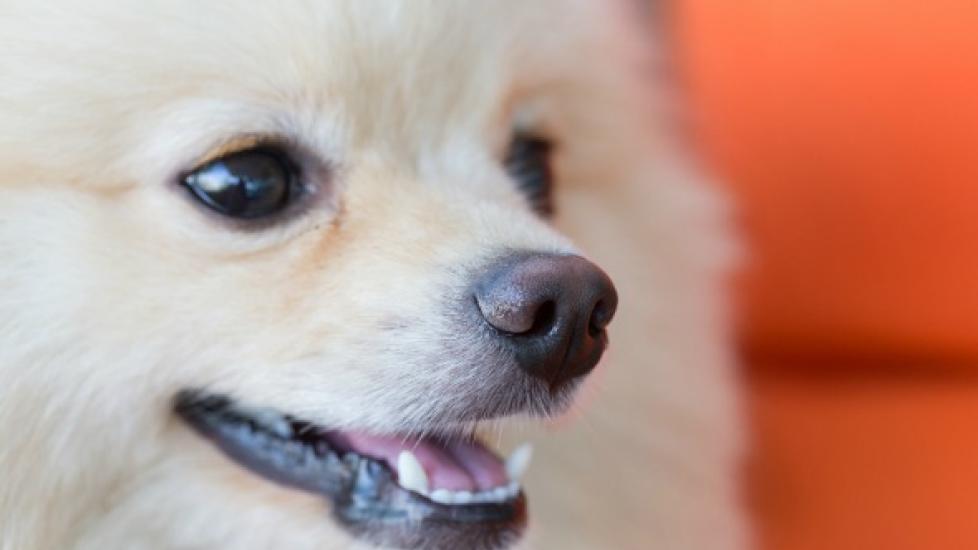Anaerobic Bacterial Infections in Dogs
Anaerobic infections are those that involve bacteria that are able to grow best in the absence of free oxygen. Consequently, these bacteria often thrive in the mouth around the gums; in deep wounds, such as those caused by puncture to the skin; in wounds caused by fractured bone, where the bone has broken through to the surface; and in deep bite wounds from other animals. Anaerobic infection should be suspected when a wound is healing very slowly.
Although anaerobes are a normal part of the body's chemical community, living in symbiosis in the abdomen, vaginal canal, intestines and mouth, when something happens to disrupt the balance of bacteria, such as what occurs with surgery, deep injuries or internal infections, these bacteria can invade the dog's tissue, leading to deep infection and tissue death. If left untreated, an anaerobic infection can lead to shock and even death.
Symptoms and Types
Depending on the cause of the anaerobic infection, dogs may display a variety of symptoms. Dogs that have developed an anaerobic bacterial infection because of a wound, for instance, may display bite marks, have pus oozing from the wound, or open fractures (where bone sticks out). Moreover, wounds infected with anaerobic bacteria will be slow to heal. Other common symptoms of anaerobic bacterial infections in dogs include fever, lameness, difficulty eating, and loss of appetite (related to infection of the gums).
There are also several types of bacteria that can lead to infections, including:
- Bacteroides
- Fusobacterium
- Actinomyces
- Clostridium
- Peptostreptococcus
Causes
The ultimate cause of an anaerobic bacterial infection is the disruption of normal bacterial balance within the dog's body. This can be due to deep injury, trauma, or recent surgical procedures (such as abdominal surgery or when metal implants are placed within the body to support broken bones).
Diagnosis
You will need to give your veterinarian a thorough history of your dog's health, onset of symptoms, and possible incidents that might have led to this condition, such as injuries, even slight injuries, fights your dog might have had with another animal, problems eating (which may be related to a mouth infection), and any recent surgeries. Your doctor will need to rule out other causes before making a confirmation of anaerobic infection.
Standard tests include a chemical blood profile, a complete blood count, and a urinalysis, any of which may show a higher than normal white blood cell count, or evidence of a systemic infection. Your veterinarian will be taking samples of any pus along with the tissue (skin/muscle) around the wound to be laboratory cultured (grown) without oxygen. If there is growth, this may be taken as a confirmation that anaerobic bacteria are present.
Treatment
Your veterinarian will put your dog on long-term antibiotics. While it can be frustrating to give your dog pills for weeks, it is essential to do so for the entire course, even after the symptoms have passed and your dog appears to be better. If even a small amount of the infection remains, it can return worse than before. For especially reluctant dogs, many of them will eat pills that have been hidden in a small amount of human food. If you use this method to give antibiotics to your pet, always be sure that the dog has eaten and swallowed the entire bite of food and that it is not spitting it out in a hidden place (behind a couch, etc.).
Specific treatment will be dependent on whether the infection is in an easily reachable location. If the infection is in the muscles (of the legs, back, rump, neck, etc.) the veterinarian will open the wound, clean out the dead tissue and expose the tissue to oxygen. If the anaerobic infection is within the body, such as an infected uterus, inside the bones, or in the abdomen, then the veterinarian will have to anesthetize the dog to surgically open and clean and/or drain the wounds.
Living and Management
These infections are often long-lasting and require long-term antibiotics and monitoring by a veterinarian. It is important to give the antibiotics to your dog on time and as your veterinarian has instructed. If there is bandaging, have your veterinarian go over cleaning and redressing procedures, to ensure that the wound is able to heal. You may need to use am Elizabethan collar, or cone, to keep your dog from getting to the wound.
Be sure to take your dog back for regular follow-up appointments so that wounds may be reopened and cleansed if necessary. Biochemical profiles will also be repeated at follow-up veterinary visits to check on the status of the infection.
In-between visits, you should call your veterinarian if you notice any changes in your dog's behavior. If the dog seems very tired, has no appetite, or has any redness, swelling or pus at the site of the wound, for example, be sure to consult your veterinarian immediately.
During the healing process, you may need to avoid certain activities, such as swimming, or you may need to limit your dog's outdoor time, to prevent the infected site from getting dirty.
